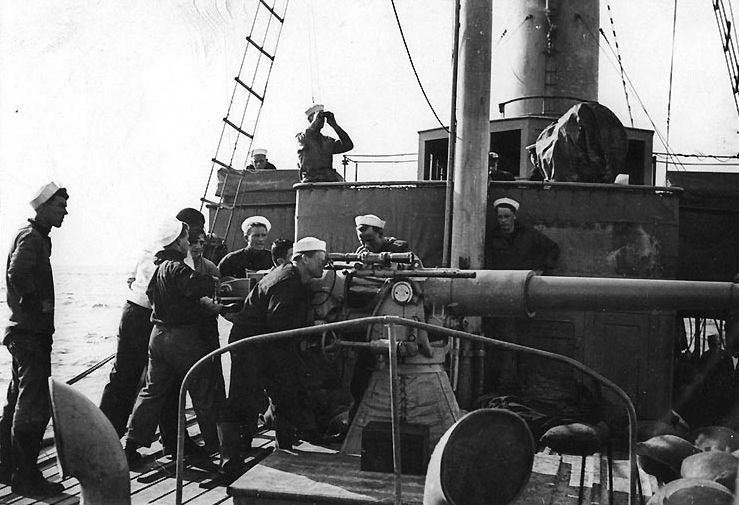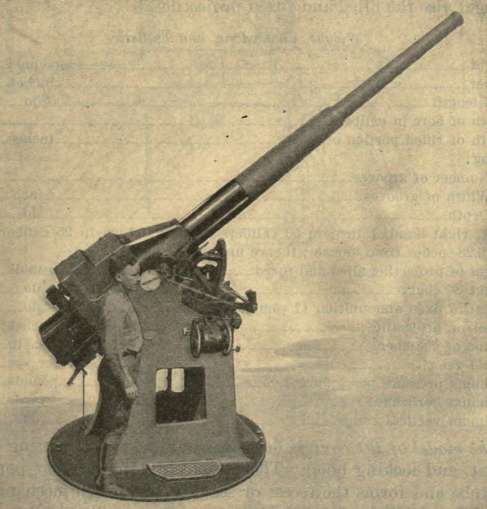|
3-inch Gun
A 3-inch gun is a gun with a 3-inch bore. Examples include: * 3-inch M1902 field gun also M1904, M1905 * 3-inch gun M1903 - US coast defense gun, also M1898, M1902 seacoast gun *3"/50 caliber gun - US dual purpose naval gun *3"/23 caliber gun - US dual purpose naval gun *QF 3 inch 20 cwt The QF 3 inch 20 cwt anti-aircraft gun became the standard anti-aircraft gun used in the home defence of the United Kingdom against German airships and bombers and on the Western Front in World War I. It was also common on British warships ... - British anti-aircraft gun * 3-inch Gun M1918 - US anti-aircraft gun * 3-inch Gun M5 - US anti-tank gun {{SIA 76 mm artillery ... [...More Info...] [...Related Items...] OR: [Wikipedia] [Google] [Baidu] |
3-inch M1902 Field Gun
The 3-inch Gun, Model of 1902 was the U.S. Army’s first nickel steel, quick-firing field gun with a recoil mechanism. Like its predecessor the 3.2-inch gun M1897, it was a rifled breechloader. Design During the second half of 1890s the so-called "quick-firing revolution" was underway, and many countries from Russia and Germany to the Transvaal Republic started to adopt guns with some recoil systems, but the Army adopted a morally obsolete 3.2-inch gun M1897 instead. Quickly realizing the mistake, the Ordnance Department alongside the M1897 production started development of what was termed an "accelerated-fire gun", and Captain Charles B. Wheeler designed a 3-inch gun which allowed more shots to be made faster but still required to relay the gun after each shoot. However by 1900, when its procurement was underway, first concrete information about the revolutionary French Canon de 75 modèle 1897 was declassified and new true quick-firing designs with a long recoil by private manu ... [...More Info...] [...Related Items...] OR: [Wikipedia] [Google] [Baidu] |
Gauge (bore Diameter)
The gauge (or commonly bore in British English) of a firearm is a unit of measurement used to express the inner diameter (bore diameter) of the barrel. Gauge is determined from the weight of a solid sphere of lead that will fit the bore of the firearm and is expressed as the multiplicative inverse of the sphere's weight as a fraction of a pound, e.g., a one-twelfth pound lead ball fits a 12-gauge bore. Thus there are twelve 12-gauge balls per pound, etc. The term is related to the measurement of cannon, which were also measured by the weight of their iron round shot; an 8-pounder would fire an 8 lb (3.6 kg) ball. Gauge is commonly used today in reference to shotguns, though historically it was also used in large double rifles, which were made in sizes up to 2 bore during their heyday in the 1880s, being originally loaded with black powder cartridges. These very large rifles, called "elephant guns", were intended for use primarily in Africa and Asia for hunting lar ... [...More Info...] [...Related Items...] OR: [Wikipedia] [Google] [Baidu] |
3-inch Gun M1903
The 3-inch gun M1903 and its predecessors the M1898 and M1902 were rapid fire breech-loading artillery guns with a 360-degree traverse. In some references they are called "15-pounders" due to their projectile weight. They were originally emplaced from 1899 to 1917 and served until shortly after World War II. These 3-inch guns were placed to provide fire to protect underwater mines and nets against minesweepers, and also to protect against motor torpedo boats. In some documentation they are called "mine defense guns". The 3-inch guns were mounted on pedestal mounts (or a retractable "masking parapet" mount for the M1898) that bolted into a concrete emplacement that provided cover and safety for the gun's crew. History The 3-inch mine defense guns were part of a comprehensive plan of new fortifications specified by the Board of Fortifications of 1885. The new forts initially included guns up to 12-inch (305 mm) on disappearing carriages, to conceal the fort from obser ... [...More Info...] [...Related Items...] OR: [Wikipedia] [Google] [Baidu] |
3"/50 Caliber Gun
The 3"/50 caliber gun (spoken "three-inch fifty-caliber") in United States naval gun terminology indicates the gun fired a projectile in diameter, and the barrel was 50 calibers long (barrel length is 3 in × 50 = ). Different guns (identified by Mark numbers) of this caliber were used by the U.S. Navy and U.S. Coast Guard from 1890 through to 1994 on a variety of combatant and transport ship classes. The gun is still in use with the Spanish Navy on ''Serviola''-class patrol boats. Early low-angle guns The US Navy's first 3"/50 caliber gun (Mark 2) was an early model with a projectile velocity of per second. Low-angle (single-purpose/non-anti-aircraft) mountings for this gun had a range of 7000 yards at the maximum elevation of 15 degrees. The gun entered service around 1900 with the s, and was also fitted to s. By World War II these guns were found only on a few Coast Guard cutters and Defensively Equipped Merchant Ships. Low-angle 3"/50 caliber guns (Marks 3, 5, 6 ... [...More Info...] [...Related Items...] OR: [Wikipedia] [Google] [Baidu] |
3"/23 Caliber Gun
The 3"/23 caliber gun (spoken "three-inch-twenty-three-caliber") was the standard anti-aircraft gun for United States destroyers through World War I and the 1920s. United States naval gun terminology indicates the gun fired a projectile 3 inches (76 mm) in diameter, and the barrel was 23 calibers long (barrel length is 3" x 23 = 69" or 1.75 meters.) Description The built-up gun with vertical sliding breech block weighed about 531 pounds (241 kg) and used fixed ammunition (case and projectile handled as a single assembled unit) with a 13-pound (6 kg) projectile at a velocity of 1650 feet per second (500 m/s).Campbell 1985 p.146 Range was 10100 yards (9235 meters) at 45 degrees elevation. Ceiling was 18000 feet (5500 meters) at the maximum elevation of 75 degrees.Campbell 1985 p.146 History The 3"/23 caliber cannon was the first purposely-designed anti-aircraft cannon to reach operational service in the US military, and was a further development of a 1 pound ... [...More Info...] [...Related Items...] OR: [Wikipedia] [Google] [Baidu] |
QF 3 Inch 20 Cwt
The QF 3 inch 20 cwt anti-aircraft gun became the standard anti-aircraft gun used in the home defence of the United Kingdom against German airships and bombers and on the Western Front in World War I. It was also common on British warships in World War I and submarines in World War II. 20 cwt referred to the weight of the barrel and breech, to differentiate it from other 3 inch guns (1cwt = 1 hundredweight = , hence the barrel and breech together weighed ). While other AA guns also had a bore of , the term ''3 inch'' was only ever used to identify this gun in the World War I era, and hence this is what writers are usually referring to by ''3 inch AA gun''. Design and development The gun was based on a prewar Vickers naval QF gun with modifications specified by the War Office in 1914. These (Mk I) included the introduction of a vertical sliding breech-block to allow semi-automatic operation. When the gun recoiled and ran forward after firing, the motion also opened the bree ... [...More Info...] [...Related Items...] OR: [Wikipedia] [Google] [Baidu] |
3-inch Gun M1918
The 3-inch gun M1918 was a United States 3-inch anti-aircraft gun that entered service in 1918 and served until it was largely superseded by the 3-inch anti-aircraft gun M3 in 1930, though the M1918 remained with some National Guard units until early in World War II. The M3 was subsequently replaced by the M1 90mm AA gun early in World War II, primarily during 1942. The M3 3" gun was later adapted for the anti-tank role, serving as the main armament of the M10 tank destroyer during World War II. The predecessor: 3-inch gun M1917 The 3-inch gun M1917 was the United States Army's first dedicated anti-aircraft gun, entering service during World War I. Only a few were built, as the similar 3-inch gun M1918 on a mobile mount was considered more useful and was produced in large numbers. Development of the M1917 started in 1915, and as the name implies, took two years to enter service. The gun was essentially an unmodified 3-inch M1903 (76.2 mm L/55) coastal-defense gun barrel ... [...More Info...] [...Related Items...] OR: [Wikipedia] [Google] [Baidu] |
3-inch Gun M5
The 3-inch gun M5 was an anti-tank gun developed in the United States during World War II. The gun combined a barrel of the anti-aircraft gun T9 and elements of the 105 mm howitzer M2. The M5 was issued exclusively to the US Army tank destroyer battalions starting in 1943. It saw combat in the Italian Campaign and on the Western Front in Northwest Europe. While the M5 outperformed earlier anti-tank guns in the US service, its effective employment was hindered by its heavy weight and ammunition-related issues. Losses suffered by towed TD battalions in the Battle of the Bulge and the existence of more mobile, better protected alternatives in the form of self-propelled tank destroyers led to gradual removal of the M5 from front line service in 1945. Development and production history In 1940, the US Army just started to receive its first anti-tank gun, the 37 mm gun M3. While it fit the request of the Infantry for light, easy to manhandle anti-tank weapon, Artillery and Ordnan ... [...More Info...] [...Related Items...] OR: [Wikipedia] [Google] [Baidu] |





